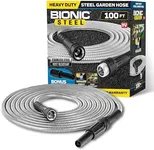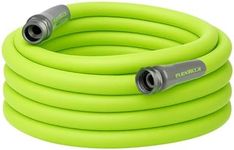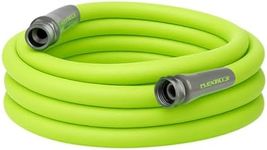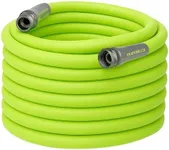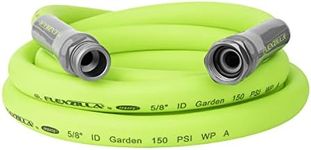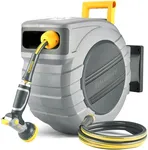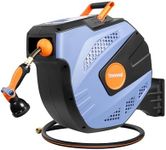Buying Guide for the Best Garden Hoses
Choosing the right garden hose can make watering your plants, washing your car, or cleaning your patio much easier and more enjoyable. The best hose for you depends on how you plan to use it, the size of your garden, and your storage options. By understanding the key features and how they relate to your needs, you can find a hose that is durable, easy to handle, and fits your daily tasks.LengthThe length of a garden hose determines how far it can reach from your water source. Hoses come in various lengths, typically ranging from 25 to 100 feet. Shorter hoses (25-50 feet) are lighter and easier to store, making them ideal for small gardens or patios. Medium lengths (50-75 feet) suit average-sized yards, while longer hoses (100 feet or more) are best for large gardens or if you need to reach distant areas. To pick the right length, measure the farthest point you need to reach and choose a hose that covers that distance without being excessively long, as longer hoses can be heavier and harder to manage.
DiameterThe diameter of a garden hose affects how much water flows through it. Common diameters are 1/2 inch, 5/8 inch, and 3/4 inch. A 1/2-inch hose is lightweight and suitable for light watering tasks, but it delivers less water. A 5/8-inch hose is the most versatile, balancing water flow and weight, making it a good choice for most home gardens. A 3/4-inch hose provides the highest water flow, which is useful for heavy-duty tasks or if you need to fill large containers quickly. Consider what you’ll use the hose for most often to decide which diameter fits your needs.
MaterialGarden hoses are made from materials like vinyl, rubber, or a combination of both. Vinyl hoses are lightweight and affordable, but they may kink more easily and are less durable. Rubber hoses are heavier but more flexible, durable, and resistant to weather and kinking. Some hoses have reinforced layers for extra strength. If you need a hose for occasional, light use, vinyl may be enough. For frequent or heavy-duty use, or if you want a hose that lasts longer, rubber or reinforced hoses are a better choice.
Flexibility and Kink ResistanceA hose’s flexibility determines how easy it is to maneuver around your garden, while kink resistance means it won’t easily twist and block water flow. Some hoses are designed to be extra flexible or have anti-kink technology. Highly flexible hoses are easier to coil and move, but sometimes more prone to kinking if not well made. If you often move your hose around obstacles or need to store it in tight spaces, look for one that advertises good flexibility and kink resistance.
Couplings (Fittings)The couplings are the metal or plastic ends that connect your hose to the faucet or nozzle. Brass fittings are the most durable and leak-resistant, while plastic fittings are lighter and less expensive but may wear out faster. Some hoses have ergonomic or crush-proof couplings for easier handling. If you want a long-lasting, reliable connection, choose hoses with solid brass or high-quality metal fittings.
WeightThe weight of a hose affects how easy it is to carry, drag, and store. Lighter hoses are easier to handle, especially for people who may have trouble lifting or moving heavy objects. However, lighter hoses are often less durable. Heavier hoses, usually made of rubber or with reinforced layers, last longer but can be more difficult to move. Think about how often you’ll need to move your hose and how much weight you’re comfortable handling.
Storage and RecoilSome hoses are designed to be easy to store, such as expandable or coiled hoses that shrink when not in use. These are great for small spaces or if you want to avoid winding up a long hose. Traditional hoses may require a reel or hanger for storage. If you have limited storage space or want a hose that’s quick to put away, consider an expandable or coiled model.


